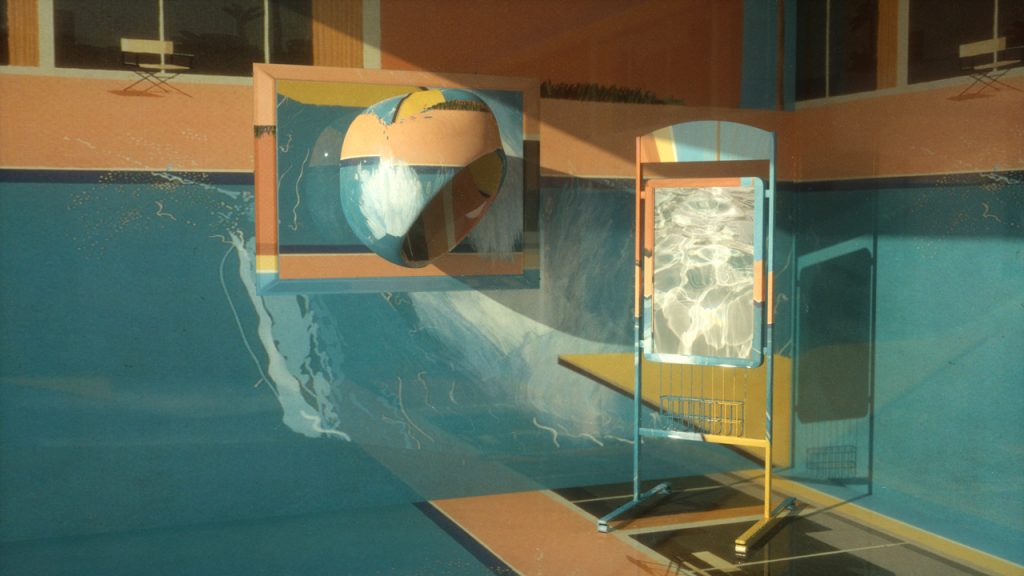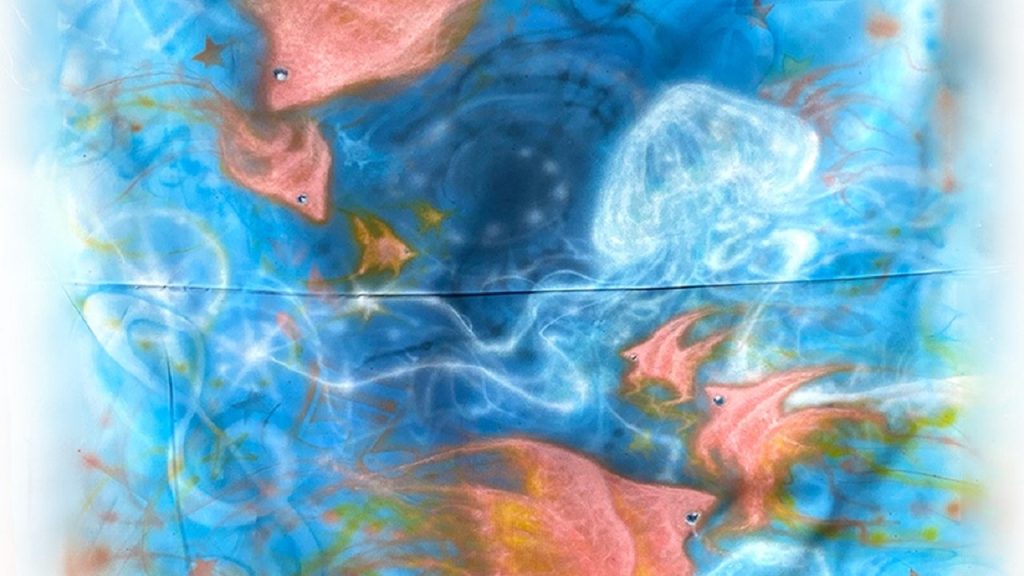awaport Q&A vol.1 – Holly Waxwing –
2025/02/07
人工的な音像と、動植物的世界を結びつけるピュアな視点
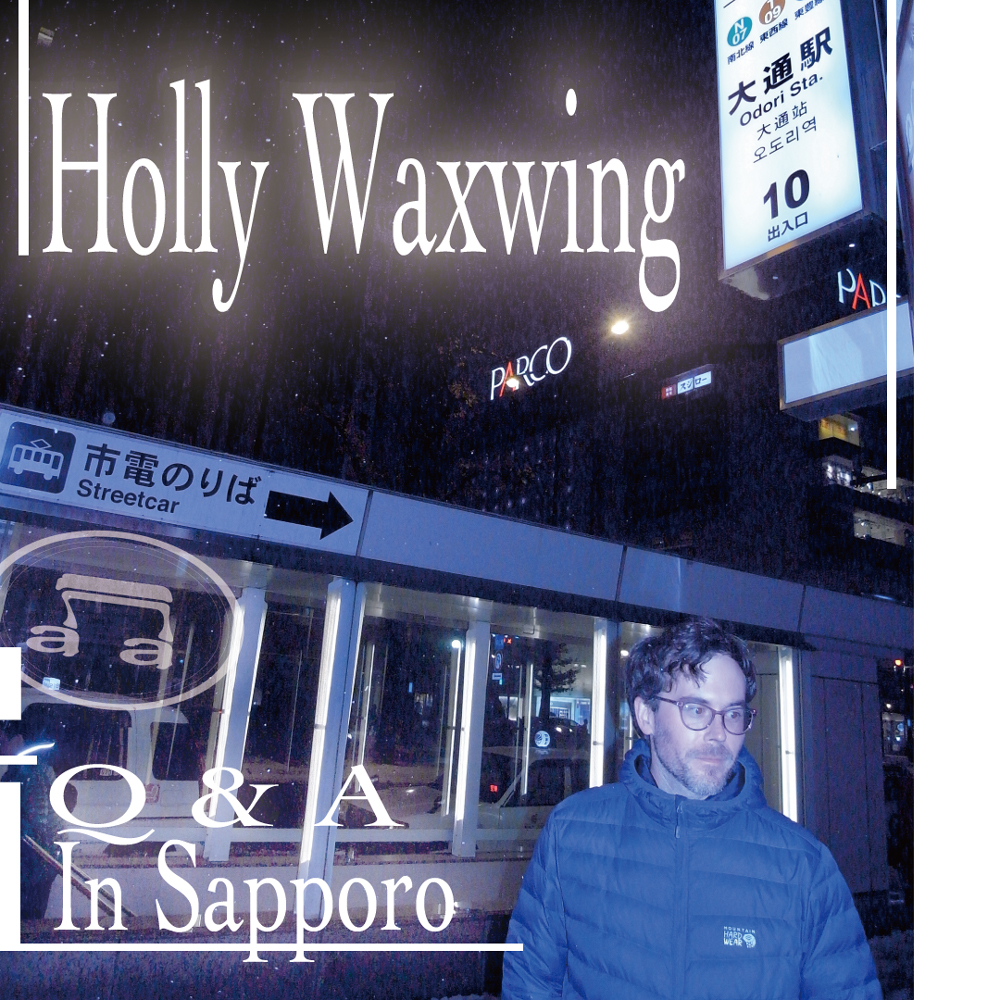
Holly Waxwing : Noumenal Loom (~2023) ,We Time Audio House のオーナー。2013 年 9 月、1st アルバム「Goldleaf Acrobatics」をリリース。アメリカ合衆国はアラバマ 州出身、現在はプロビデンスを拠点に、PC Music・Orange Milk・Activia Benz など から作品をリリース。2024 年 8 月に Orange Milk からリリースされた Galen Tipton と共作の最新アルバム「 keepsakeFM 」は日本でも大きな話題を呼んだ。
限りなく人工的な、hyperpopやBubblegum popといわれる音像でありつつ、ナイトクラブではなく森の中を想起させる、静観で柔らかな動植物的エコ・アンビエンス。
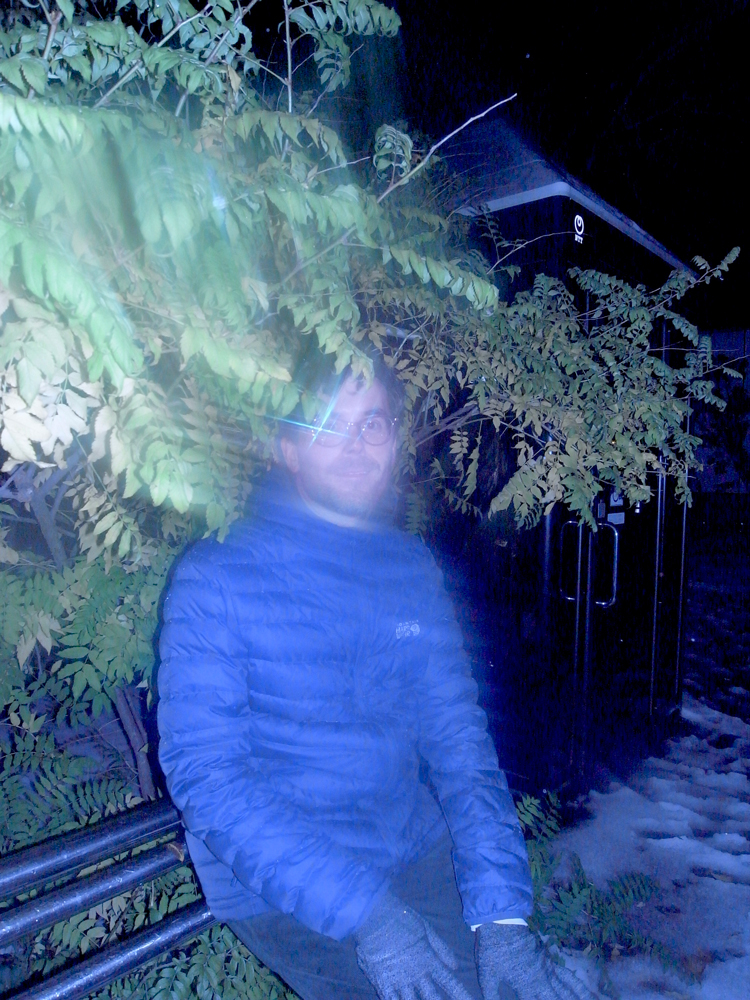
11 月 1~5 日にかけて行われた新千歳空港国際アニメーション映画祭にて、インター ナショナルコンペティション短編部門を受賞した Sonnyé Lim 氏の「Happy Green」。 劇中のサウンドを手がけていた Holly Waxwing 氏がゲストとして日本に初来日!
今回、映画祭での講演とあわせて札幌と小樽を観光に訪れたという彼に、awaport が インタビューを行いました♬
──初めに、お会いできて本当に嬉しいです!日本旅行はいかがですか?ここの景色、食べ物、人々についてどう思いましたか?
私もお会いできて嬉しいです!これまでの日本旅行はすごく特別なものだったよ。日 本をずっと訪れたいと思っていたんだ。
妻の Isabel と私がサウンドを手がけた Sonnyé Lim の短編映画 [ HAPPY GREEN ] が 上映された、新千歳空港国際アニメーション映画祭に参加するために来日を計画した んだ。だから日本での最初の数日は空港で過ごすことになって少し変な感じだったん だけど、意外と良かったよ(笑)。映画祭のおかげで初めて日本を、札幌・北海道を訪 れることができて嬉しい。私は冬が大好きで、特に雪の降るこの場所にいると、魔法 のような気分になるよ。人々は素晴らしく、とても親切で、私を歓迎してくれた。た くさんの新しい友人にも会えた。
景色はとても美しかったんだけど、まだ思っていたより自然の中に出かけることができていないんだ。滞在の前半は空港にいたしね。電車で通った田舎の風景はとても美 しかったし、小樽の歴史的な建築物や景色もとても気に入ったよ。今朝友人と藻岩山 に登る予定だったんだけど、雹がかなり強く降っていたので、残念ながら延期するこ とにした。

日本の食べ物は最高。今食べているお寿司は今まで食べた中でいちばんのお気に入りで、間違いなく人生で食べた寿司の中で一番だよ!とびっこ巻がいちばん好きかも。
インタビューの時期的な話を少し入れると、昨日は米国の選挙があった。国にとって 政治的に非常に厳しい時期に何千マイルも離れた土地にいられるのは気休めになるよ。
──世界中の多くの電子音楽ファンは、同時に日本文化を愛しているように思います。 音楽でも、音楽以外、アニメや漫画などでも、特に好きな日本文化や影響を受けた面 はありますか?
もちろんあるよ!簡潔にまとめたいけど、日本の芸術、食べ物、音楽には、人生を通じて、私にインスピレーションを与えてきたものが本当にたくさんあるんだ。まず日本料理だね。日本料理には、細部へのこだわりと、シンプルな材料や調理法から大きな複雑さを引き出す能力があり、非常にユニークに感じられる。玉露茶、日本酒、刺身などがいい例で、これらは全て、ニュアンスを理解し本質的に楽しむときに、少し集中する必要があり、心を少し鎮める必要があると思うんだ。
ポケモンと任天堂にも感謝したい。ポケモンは私が子供の頃にアメリカで大流行したんだ。カードを集めたり、初期のゲームボーイで遊んだりしたことが、当時の私の想像力の一部を形成したと思う。任天堂のゲーム機は、私が所有した唯一のゲーム機で、 一部の N64 ゲームの世界とスコアは私の潜在意識の中に永遠に残っている。ゼルダ シリーズは多分ずっと私のお気に入りで、ボンバーマンヒーローも本当に大好きだよ。
日本の技術、特にヤマハも私の音楽スタイルに大きな影響を与えてきた。最近、FM シンセシスの発明者 John Chowning に会うことができたんだけど、彼がヤマハと共同で開発した DX7 は普遍的でとても象徴的で、その音は多くの現代音楽を通して、それと知らない人にも響き渡っていると思う。
村上春樹は、10 代の頃に私の想像力を本当に魅了した最初の作家の 1 人。私は特に 海辺のカフカが大好きだ。
音楽に関しては、数え切れないほど多くの影響を受けている。私はシティポップ、日本のジャズ、古いものと現代の実験的な電子音楽作品、ビデオゲームのオリジナルサウンドトラック、J-Pop が大好きだよ。思い浮かぶ大きなアーティストとしては、坂本龍一、筑摩淳、Perfume、細野晴臣、越美晴、甲田都、佐藤博、吉村弘、清水靖晃、 山下達郎、TakShindo(日系アメリカ人) などがいて、日本は直接的にも間接的にも、 私の音楽に多大な影響を与えてきたんだ。また、多くの日本のアーティストは、西洋のアーティストとは異なる独特のサウンドを持っているように感じている。
──サウンドの違いは何だと思う?
色彩と質感に重点が置かれていると思う。音色。坂本龍一の電子音楽作品では、サウンドが非常に直感的だと感じる。物理的な存在感と影響力があるんだ。多くの場合、 このように感じさせるのは FM 音源、特にヤマハの DX7 を多用しているためだと思うけれど、日本においてはアプローチと感性が少し異なっていたと思う。
Brian Eno の 1983 年のアルバム「Apollo: Atmospheres and Soundtracks」は DX7 で録音された が、非常にパッドが前面に出ている。私の耳には、こういった類のパッドはほとんど液体のようで、すべての必要な余白を埋め尽くしている。比較すると、吉村弘の 1986 年のアルバム「Green」も DX7 を多用しているが、私にははるかに空間が広く、空気と光に満ちているように感じられる。サウンドはより気骨があり、直感的だ。 Greenの方がより多くのことが瞬間的に起きていると主張することもできるけれど、明るく、 瞬間的な重厚な音色のおかげで、個人的にはより開放的で風通しの良い空間のように 感じるよ。
また、J-Pop の BPM は、西洋のポップミュージックに比べてずっと高いことが多い ところも気に入っているよ。
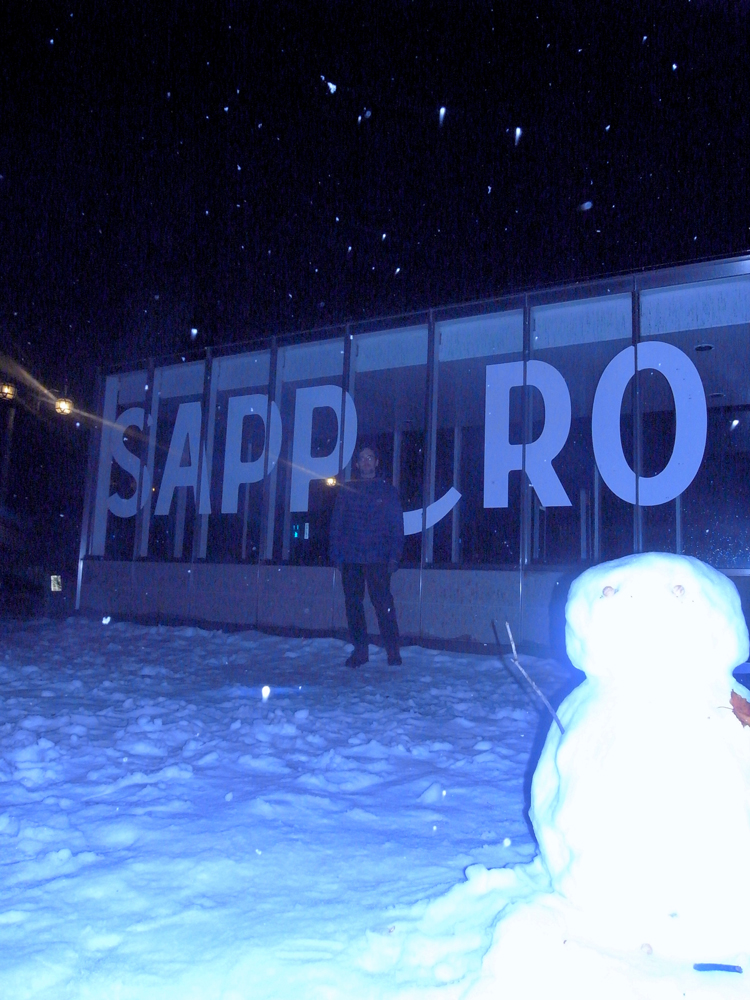
──以前、「 ̄ \__( ツ )__/ ̄」という曲をリリースされていましたよね。絵文字はよく使いますか?
曲名に絵文字を使うことはあまりないんだけど、以前はよく使っていた。最初のアルバム「Goldleaf Acrobatics」では、はじめはそれぞれの持つ意味を強めるために曲名に特別な文字や絵文字を添えていた。こういう言葉遊びが好きで、絵文字や特別な文字がタイトルに動きや神秘感をもたらすのが好きなんだ。
──なぜこの絵文字を使うことにしたの?
この曲はもともと、アラバマ州バーミンガムでアーティストのオーランド・トンプソンと一緒に行ったサウンドインスタレーション作品のために作曲したものだった。これは独立した作品であり、大きなプロジェクトのためではなかったから、遊び心のある名前を付けたいと思ったんだ。即興的で自由な曲をリリースすることに慣れていなかったから、当時は不完全な感じがした。肩をすくめる絵文字は、これを世に出した時の「もういいや」という気持ちを表わしているような気がする。時が経つにつれてこの曲をだんだん好きになった。この作品は、A. G.CookがPC Music との仕事について最初に連絡をくれたきっかけとなった作品の1つなんだ。
──彼はそのインスタレーションを訪れていたんですか?
彼はインスタレーションにはいなかったけれど、その後、私はその曲を SoundCloud で公開した。
──以前インタビューで、あなたのアーティスト名である”Holly Waxwing”は、アメリカのヒイラギの木(Holly)とヒメレンジャク(Cedar Waxwing)という鳥に由来していると話しているのを読みました。長年鳥類学と菌類学を学ばれているとか。自然界はあなたの音楽にどのような影響を与えましたか?最初に自然の世界に惹かれたきっかけを教えてください!
鳥やキノコについて学ぶには、かなりの集中力と選択的注意能力が必要なんだ。どちらの趣味も、選択的に観ることや聴くことが求められる。私にとって、こういった集中力は、しばらくの間他の世界を忘れさせてくれ、本当に心を静めてくれる。こうして実践しないと、日々の生活の中でこのような集中力や静けさを得るのは本当に難しいから、私にとっては本当に良いグラウンディングとリフレッシュになっているよ。
自然が促す積極的な聴取と観察は、その浸透性によって自然に私の音楽実践に染み込んでくる。自然との関係が深まるにつれ、私はスタジオの内外でより良い聴き手になり、私の音楽はより根気強く、より広々としたものになったと思う。また、鳥やキノコのありのままの音や外見からもインスピレーションを得ている。鳥のさえずりのコール&レスポンスは、私の最新のソロアルバム「The New Pastoral」の曲「Softcorners」に多くのインスピレーションを与えてくれた。
幼少期、私は自然と関わるのがかなり苦手だった。自閉症で、光や熱や虫の音にとても敏感だったから(笑)。10歳くらいの頃、近所の墓地にキノコがあるのに気づき始めて、雨が降った後にどんな種類のキノコが生えてくるかを見るために、よくそこに行くようになった。その興味が深まり、より科学的に厳密にキノコを研究するようになったのは、ここ10年ほどのことだよ。大学時代に鳥に夢中になったんだ。アカゲラは私の「きっかけの鳥」。つまり鳥、私が鳥に本当に夢中になるきっかけとなった鳥。アカゲラはとても美しく、私がアラバマ州モンテバロの学校に通っていた頃は、そこでは本当によく見かけた。
──あなたにとって、音楽とキノコの関係は何?
音楽とキノコは私にとって本来、直接的につながっているわけではないけれど、さっき言った通りキノコについて学んだり、キノコから学んだりすることは、私をより良い聞き手にしてくれる。私の脳は少し過活動になっているから、自然の中にいるとすべてが少し落ち着いて、作曲に必要な落ち着いた集中力が得られると思う。
また、鳥、植物、キノコなど、自然界にあるものを見て、その視覚的な特性に大きく影響されることがよくある。音を作るとき、特に新しい作曲を始めるときは、その音を視覚的および物理的特性、例えば光沢、明度、粘性、半透明性、硬さ、弾力性、色など、の観点から考えるんだ。私はよく作りたい音のイメージを頭の中で描いている。プラスチックのような音にしたいかもしれないし、絹のように柔らかく光沢のある音にしたいかもしれない。つまり、私が音に変換して描きたいのは、キノコの個性的な物理的特性であることが多いんだ。
──自然の中でリサーチを行うことと、デジタルプラットフォームで音楽を作曲することは、対照的だと思います。一見相反するこれらのプロセスが相互につながった特定の瞬間はある?
最初にプロジェクトをHolly Waxwingと名付けたとき、最初の音源「Goldleaf Acrobatics」が完成する前、私は実際には、ヒメレンジャクを見たことは無かったんだ。けれど彼らは確かな神秘生を持っていて、私を惹きつけ、私の想像力を本当にかき立てた。彼らはとても興味深い姿勢・形をしており、私には快活な天使にも似た輝きを感じる。私はこの感覚を音楽に取り入れたいと思った。
アルバムが完成しつつあるとき、家からそれほど遠くないヒイラギの木の周りに数百匹の彼らが群がっているのを見たんだ。それはとても特別な感じで、この新しい音楽の方向性とサウンドアプローチを貫くという私の決断を象徴的に裏付けているような気がした。それは私の自然と音楽への愛がより深く結びついた瞬間だったと思う。
──普段はいつインスピレーションを得ているの?
私にとってこれは2つの面がある。そもそも私は、音楽を書きたいと思うためにある程度の精神状態にいなければならないんだ。芸術の実践のために難しいことに取り組むことを好み、その混乱が生産的になる人がいるというのも知っているけれど、私個人としては、作曲するには、かなり安定した幸せな状態にならなければいけないんだ。自分を労って、よく食べ早く寝て、たくさん外に出ることで、その精神状態に頻繁にいられるように働きかけるんだ。単純なことだけど、こういうことの積み重ねが、私にとっては、かなり大きな違いになるんだ。
良い映画を見るととても刺激を受けるし、シンセパッチを作ったり、キーボードで遊んでみたりといった、何らかの音楽の練習を日々の生活に取り入れると、インスピレーションがより頻繁に湧いてくる。座って心をさまよわせれば、退屈は本当に創造的で生産的な時間になると思う。
コンピューターで作業することが多いから、アルバムの作曲に没頭しているときは、画面からできるだけ離れるようにしている。「The New Pastoral」を作曲していたとき、幸運なことに、友人がバーモント州の山小屋に泊めてくれた。雪に覆われた森の中で、ほとんど何もすることがなく、携帯電話の電波も届かず、1週間でアルバムのほぼ半分の基礎を作り上げたんだ。
──自然の要素をエレクトロニック ミュージックに取り入れようと思った具体的な瞬間はあった?
私にとってこの 2 つは常に関連しているよ。私が最初に聴いたエレクトロニック ミュージック、Four Tet、Flying Lotus、Brian Eno、Bjork などは、直接的または間接的に自然と結びついているように感じていた。14 歳くらいのときに初めてサンプリングを試したとき、フィールドレコーディングを取り込んで切り刻み、曲のテクスチャを作成するのが好きだった。自然は常に私の音楽制作の一部を形成してきたと思うよ。
──あなたの音楽は、SOPHIEやEASYFUNにも似た人工的な音像ですが、自然の活気に満ちた御伽噺のような世界観ですよね。こういった独自のブレンドを生み出すための、制作プロセスやそれを導く特定のテクニック、習慣、創造的な動作などはある?
テクニックに関して言うと、私の音楽スタイルで非常に大きな役割を果たしているものの1つはFMシンセシス(周波数変調シンセシス)だと思う。私はAbletonのOperatorをよく使っていて、アルバムごとに、いくつかのツールを選んで徹底的に学び、それ以外は本当に制限するようにしている。「Goldleaf Acrobatics」では主にピッチ、タイム、サンプルで、「Peach Winks」ではパーカッションとサンプルだった。「The New Pastoral」では主にMIDI、シンセシス、エフェクトで、サンプリングも少し使用した。私は完璧主義者だから、ツールが多すぎると、音楽を書くより、ツールの習得にほとんど自分の時間を費やしてしまうから、本当に減らすようにしているんだ。リバーブやディレイなど、ありふれたツールのように見えるものを手に取って、その機能すべてを習得しようと試みることは楽しいよ。こうした探求は、私に真に新しい扉を開かせてくれ、作曲のインスピレーションを与えてくれるんだ。
FM シンセシスに加えて、私が好きなもう 1 つのテクニックは、物理モデリングと Karplus-Strong シンセシスです。Sophie は Karplus サウンドを非常に得意としていた。これは、彼女が直感的なプラスチックや金属のようなサウンドを生み出せる要素の1つだった。「The New Pastoral」では、私の作品はスコアリングのようになったと思う。作曲には、より息づく余地と、より多くのネガティブスペースがある。
──アプローチやサウンドを変えるきっかけとなった何かはある?
いくつかあるよ。通勤中や自宅にいるとき以外は、ヘッドフォンをほとんど着用しなくなったんだ。だから、私はいつも周囲の音や鳥や日常の音に耳を傾けている。アルバムを作曲しているときに、日本のアンビエント/環境音楽をたくさん聴いたことも、とても関係があったと思う。そして、作曲家のヴァン・ダイク・パークスは、私の最新アルバムのサウンドに多大な影響を与えたと思う。彼のスタイルは非常に独特で、アメリカーナ、ショーチューン、カリブ海、オーケストラ音楽の要素を組み合わせている。1968年のアルバム「Song Cycle」は彼のアルバムの中で一番好きで、私の最初のアルバムと最近のアルバムには彼の影響がかなり表れていると思う。
──「keepsakeFM」や「yellow patches」など、複数のトラックで Galen Tipton とコラボレーションしているよね。彼女のサウンドも、非常に人工的な質感だけど、野生的でオーガニックな世界を呼び起こします。ハイパーポップというジャンルを超えた魅力です。彼女との友情はどのように始まったの?
Galenと私は、2015年か2016年頃にFacebookで友達になったんだ。彼女が初めて曲を作り始めたとき、私の音楽は彼女にとって大きなインスピレーションだったし、私は彼女の初期の曲を聴くのが大好きだった。私たちは音楽についてよくチャットで話していて、当時制作中の作品を共有していた。
2018年に彼女は、Orange Milk Recordsからの2019年のデビュー作「Fake Meat」でコラボレーションしないかと私を誘ってくれたんだ。この頃私たちはオンラインで仲は良かったけど、それほど親しいと言えるほどではなかった。彼女と私の共作「keepsakeFM」を始めたとき、彼女は私に「これらのデモではすでにあなたのスタイルの要素をたくさん使っている。あなたと私がアルバムを共同で作曲するなら、これはぴったりだと思う」と書いてきたんだ。彼女はタイトルトラックのデモを送ってくれて、それはすぐに私の興味を引いたから、アルバム全体を共同で制作することに同意したよ。それ以来、私たちは本当に親しい友人になり、彼女は私と直接レコーディングするために3回も私の元を訪れてくれた。
──あなたの音楽は象徴的で、確立されたスタイルを持っています。キャリアを維持することに関して、ビジネス面を考慮したり、客観的なアプローチを取ったりすることはありますか?
ありがとう!私自身の音楽、特にコラボレーションアルバムではない場合は、作曲時にビジネス面について多くは考えないよ。ただし、リリースの世界全体とビジュアル面については、作曲に深く入っていく前から考えています。私の音楽にとって「ビジネス」面は、アルバムが完成したら一度必ず考慮するもので、レコードのマーケティングとプロモーションにも取り組んでいるよ。こういったことは世界観の構築と視覚的要素について考えることと明らかに重なると思うけれど、結局のところ、私はただ自分が聴いて楽しんで、今後も誇りに思えるものを作りたいんだ。
私は通常の仕事でサウンドデザインをしているから、ありがたいことに、実用的でビジネス志向の音楽活動を行うことと、Holly Waxwingと、この 2 つの世界をある程度切り離すことができているんだ。どちらもとても楽しんでいるよ。
──「サウンドデザインの仕事」は、「We Time Audio House」のことですよね。
そう!それが私のサウンドデザインの代理店だよ!
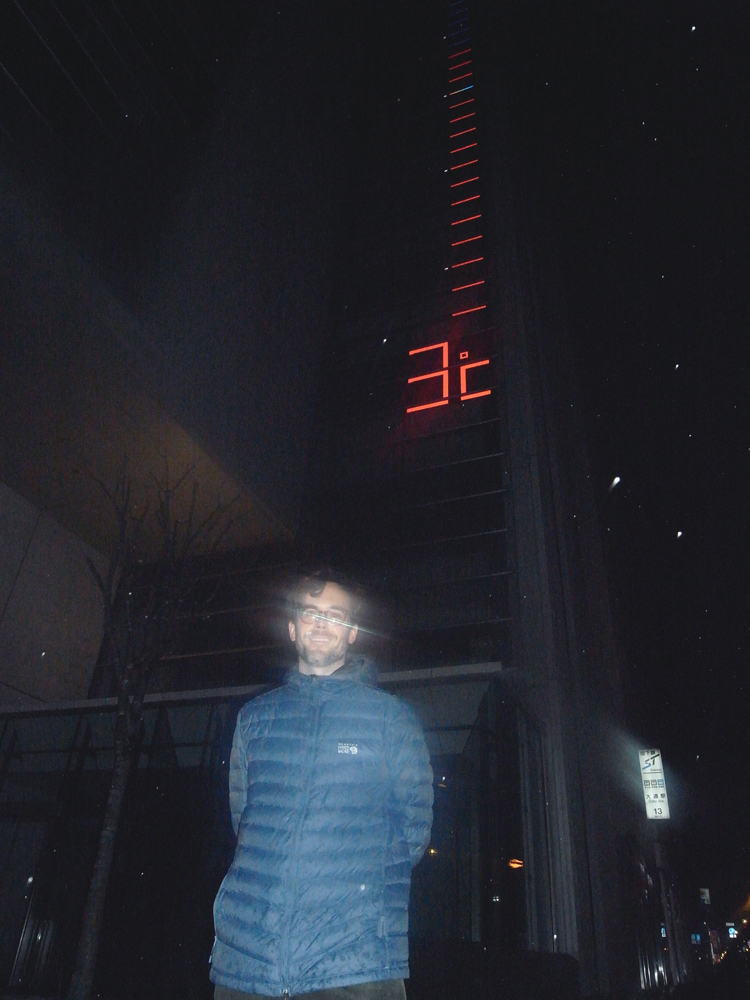
──awaportは、レーベルの活動を中心に、パーティー活動やインタビューなども行うコミュニティです。個人的には、Noumenal LoomやWe Time Audio Houseなどのレーベルの気まぐれで夢のようなサウンドスケープに深く影響を受けています。長期的なコミュニティ運営における目標、価値観、理想は何ですか?
Noumenal Loomでは、ファンとアーティストのかなり強力なオンラインコミュニティの育成に成功したと思うけれど、対面イベントをもっと積極的に行うことができたと思っているよ。レーベル所有者として最もうれしいことの1つは、アーティストの多くが、Noumenal Loomで一緒に活動した結果、友人やコラボレーターになったことだ。
また、Noumenal Loomのおかげで、Isabelと私には世界中に友人がいる。とても特別なことだよ。レーベルを通じてつながったオンラインの友人や知り合いに会うのはいつもとても楽しいし、同時にとても幸運だとも感じた。彼らと実際に会ってみると、基本的に全員が、彼らの音楽と同じくらい素敵だったからね。だからアーティストとファンのコミュニティを管理するという点では、ある程度、少し楽に感じていた。本当に良い音楽を作ることと、良い人であり、良いコミュニケーターであることの間には何らかのつながりがあると信じたいんだけど、これらはいつも伴っているわけではないということもわかっているよ。
個人の音楽活動とビジネスの両方で私が強く意識しているのは、一緒に仕事をするビジュアルアーティストやコラボレーターに、正当な報酬を得ている、と感じてもらうこと。この業界では見落とされがちだけど、DIY音楽は収益をほとんど生み出さないから、自腹を切ってでも、アーティストに十分な報酬を支払うことは、常に私にとって重要だった。今ではサウンドデザインをフルタイムの仕事としてできることにとても感謝している。We Time Audio Houseでは、最終的には、業界へ参入を考えている他の人に良い仕事を提供できるようになりたいと思っている。それが間違いなく次の5年間の目標だね!
──Noumenal Loomの運営において難しい経験はあった?
正直に言うと、一番の難関はおそらく財政面だったと思う。レーベルは初期の頃は多少の収益を上げていたけれど、その後は長い間損益なし。しばらくして赤字が出始めると、維持できなくなってきてしまった。小さなレーベルを運営するのは大変だった。アーティストにできるだけ多くの機会と財政的支援を与えたかったんだけど、私たちのような規模の独立系レーベルとして収益を上げるのがいかに難しいかを考えると、現実的ではなかった。
私たちは時間と献身を注いでプレスへの機会をアーティストに多く提供してきたと思うけど、それはますます難しくなって、音楽業界はブログや執筆中心からストリーミング中心へと変化していった。私たちは最終的に、財政的な理由と、Isabelと私がそれぞれの個人的な創作活動にもっと集中できるようにするために、10年後の2023年にレーベルを休止することにしたんだ。
──awaportのようなコミュニティのオーガナイザーに向けて、組織をより持続可能で回復力のあるものにするためのアドバイスはある?
密なコミュニティを対面で構築することは、Noumenal Loomやawaportのような音楽中心のコミュニティの寿命を延ばす良い方法だと思う。もちろん、組織が成長し変化するにつれて、その様子は年月とともに大きく変わる可能性があるけれど、オフラインイベントを結び付けることは、コミュニティを強固にするのに役立つと思う。
ブルックリンのsksksksのようなイベント主催者は、これを非常にうまく行っているよ。彼らのイベントで演奏したアーティストとしていうと、彼らのコミュニケーションとホスピタリティは本当に素晴らしい。彼らのショーの1つで演奏すると、とても歓迎され、サポートされていると感じるんだ。そして、このエネルギーが観客の体験にも浸透しているように感じる。彼らは本当に素晴らしいパーティーを開催し、加えてDJを本当に丁寧に扱う。良いプロモーションを行って、口コミで広まって、非常に長く続くものを作ることができていると思う。純粋なデジタル空間で同種の寿命を持つことは難しいと思うけれど、不可能ではないと思う。ただ、組織が非常に機敏で柔軟である必要があると思うよ。
──あなたの人生に深く影響を与えたアーティストや個人はいますか? ミュージシャンでなくても構いません。
もちろんいるよ! 難しい質問だね、人生のどの分野を考えているのかによって答えはほぼ無数にあると思う。 すぐに思い浮かぶのはArthur Russell。 彼は私の最大のインスピレーションの1人だよ!彼の死後にリリースされたアルバム「Love Is Overtaking Me」は、おそらく彼の作品集の中で一番のお気に入りです。Animal Collectiveは、今ではほとんど聴かないけれど、私の創作活動に彼らが与えた影響は絶大だったと思う。
私が10代の頃は、彼らのような音楽を作っている人は誰もなかった。彼らはいつも、私にとって本当に美しい、伝染するような熱狂的な喜びをアルバムやコンサートでもたらしてくれた。PC Musicのレーベル全体とコミュニティ、特にA. G. Cookも、2013年の設立以来、私にとって大きなインスピレーションとなっているよ。
──PC Musicでは、2022年12月に「Sister Species」、2023年2月に「Meridians」をリリースし、2023年3月に他の4曲と組み合わせて「The New Pastoral」をリリースしていましたよね。これらの連続リリースの理由は何ですか?順序やタイミングに特別な意味はありましたか?
これらのトラックの順序やタイミングには特別な意味はなく、PC Musicと合意したキャンペーンスケジュールだった。これは非常に短く焦点を絞ったレコードで、EPと呼ぶ人もいるかもしれない。その境界線は曖昧になっているけど、現在のストリーミング中心の環境では、アルバムが見過ごされやすいと思っている。
意図的にリリースのタイムラインを拡大したり、引き延ばしたりして、さらにコンテキストと世界構築を追加しないと、小さなアルバムは簡単に見過ごされてしまうと思う。これを考慮して、PC Musicと私はアルバムキャンペーンをスローダウンして拡大し、非常に視覚的にすることで、アルバムを取り巻く世界を構築したいと考えたんだ。これにより、音楽とキャンペーンがより印象的になり1日のリリースではなく、展開するストーリーのようになったと思う。
──ビジネス的な面、ですね。
部分的にはそうだね!さらに彼らの従来のアートワークのためかもしれないけれど、プロジェクトの売り上げとビジョンへの賛同にも間違いなく役立つ。アルバムのシングルは、ビジネス面を考慮して選んだのだと思うよ。EASYFUNのDeep Troubleや初期のSoundCloud限定曲みたいな、PC Music初期の作品のファンに響く可能性が高いシングル。シングルとして選んだ曲は、必ずしも私のお気に入りだった訳ではなく、アルバム全体の雰囲気を最もよく表しているわけではなかった。けれど、その時点では、アルバム キャンペーン、プレイリスト、アーティストとしての私の名前を広めるのに最も効果的だったと思う。このアルバムで私が気に入っているのは、「Arvensis」、「Milkweed」、「The New Pastoral」。でも、シングル曲が人々を惹きつけ、その後アルバムの他の曲を聴いてもらうことができたから、正しい選択をしたと思っているよ。
──PC Musicでのリリースのほかに、10周年記念パーティー「OH YEAH」や「britpop roadshow」などのイベントにも出演されていますよね。PC Music やA.G. Cookのような人物は、あなたの人生においてどのような存在ですか?
PC Music と A. G. Cook は、2013 年以来、私のプロジェクトにとって最大のインスピレーションの1つだった。だから、彼らが純粋なアーカイブスペースへと方向転換する前に、彼らと一緒にアルバムをリリースできたのは、とても非現実的な出来事だった。
私は、非常に多くのA. G.Cookの仕事が大好きだよ。素晴らしいポップ ミュージックを制作するだけでなく、実験的なエレクトロニックミュージックとレーベルキュレーションの限界を常に押し広げている。作曲とサウンドに直接関わっている人物がレーベルのA&Rも担当しているというのは、本当に新鮮だった。彼は、他のレーベルではめったにない方法で私の音楽を理解していると思う。また、PC Musicでのリリースやショーのおかげで、Alexを含む素晴らしい新しい友人のコミュニティにも出会うことができたんだ。
──今後の音楽プロジェクトのビジョンや、挑戦したい新しいことがあればおしえてください!
個人的な音楽プロジェクトの次の予定はわからないけれど、すぐに始めるのが楽しみだよ。アンビエントで広々とした作品を作るか、クラブ向きの作品を作るか、いつも迷っているので、おそらくそれぞれ1つずつ作ることになるんじゃないかな。今年の夏には「Peach Winks」の10周年記念デラックス版をリリースし、今後数年で「The New Pastoral」のリミックス/デラックス版をリリースしたいと思っている。
パートナーのIsabelと私は、ベルリンのSlagwerkのレコード制作に取り掛かろうとしている。私たちは1曲、リミックス、映画音楽の制作を一緒に行ってきたけれど、これがデュオとしての初のフルプロジェクトになる。コラボレーションはいつも私にとって新鮮で、頭を空っぽにして、もっと自由にアプローチできるようにしてくれるから、楽しみにしているよ。今後数年間で、Galen TiptonやKeith (Giant Claw)と一緒に新しい作品を作りたいとも思っているんだ!
今年はCDJ をもっと使いこなせるようになりたいとも思っているよ。コンサートや DJナイトでもっと演奏したいし、それについて学べばやる気が湧いてくると思うんだ。これまではずっとコンピューターとMIDIを使って演奏してきたんだけど、CDJ の物理的な感覚はとても刺激的で、違った感じがすると思う。何かを変えたい。
最後に、ポップアーティストのプロデュースや作曲ももっとやりたい。それについては、すでに準備中だよ!
──アルバムの制作はもう始まっているということ?
少しだけ!最近は、新しい音源の出発点としてピアノ曲を書いている。これは「The New Pastoral」のお気に入りの曲の多くでやったことで、本当に満足のいくシンセサイザー パッチを作って、それからピアノでメロディーを弾くだけだよ。
──最後に、日本のファンにメッセージをいただけますか?
まず、札幌まで足を運んで案内してくれて、このインタビューをしてくれたことに感謝するよ!そして素晴らしい写真や、このインタビューの通訳や、そして素晴らしいお付き合いにも感謝したい。日本にいるのはとても楽しく、到着してからとても歓迎されていると感じているよ。ここが大好きです。日本は、Holly Waxwing として、そしてIsabelと私がNoumenal Loomを運営していたときも、私のファン層の大部分を占めている。皆さんの継続的なサポートに感謝したいと思う。Noumenal Loom をサポートしてくださったMeditationsとKankyo Recordsに特に感謝致します。
近いうちに日本に小旅行で戻ってくる予定だから、その時、皆さんにたくさん会えることを願っているよ。
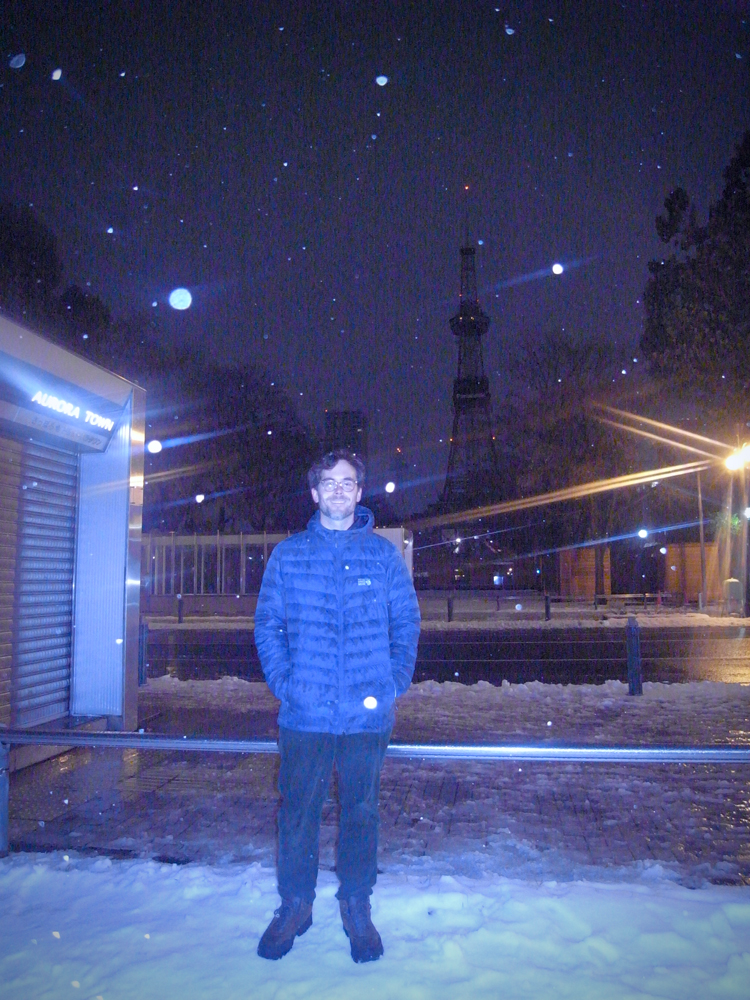
Interview Date : November 7, 2024
Location : Sapporo, Japan
Text : nonoka
Photo : Mai Kimura
Special Thanks : mostin fantasy, Shinozaki Ruka
Presented by awaport
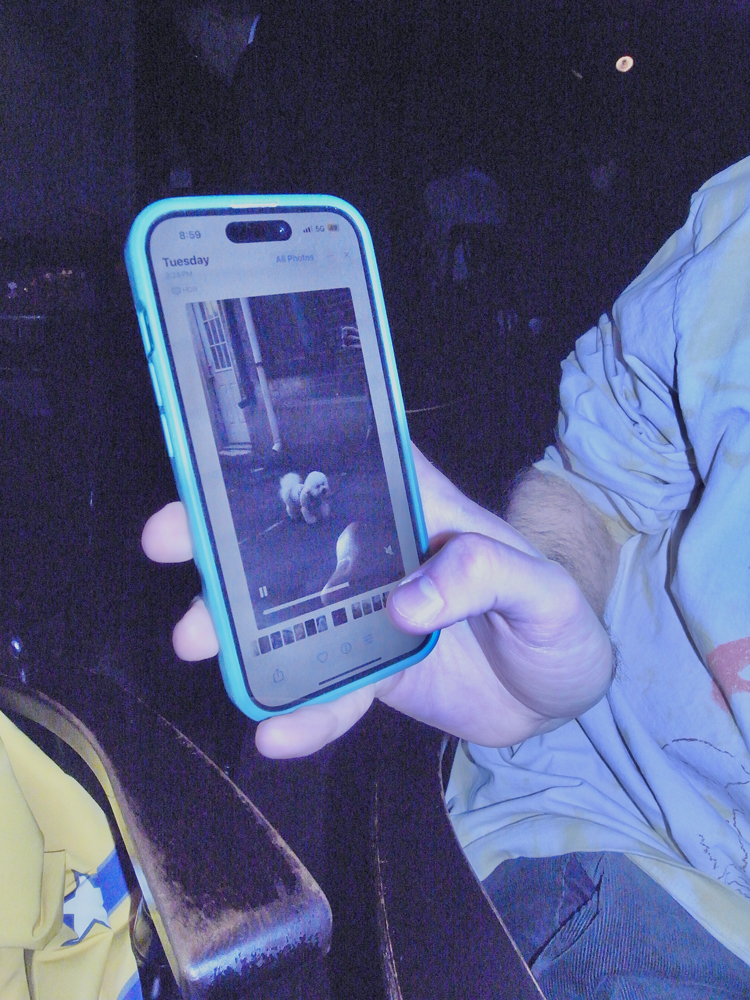
↑Holly Waxwing氏の愛犬、echo。
──First, I’m thrilled to meet you. How has your trip to Japan been? What are your thoughts on the scenery, food and people here?
It’s lovely to meet you as well ! Thank you so much for coming up to Sapporo to hang out with me. My trip to Japan so far has been so special. I have wanted to visit for a long time! I organized my visit around attending The New Chitose Airport International Animation Festival, where they screened a short film by Sonnyé Lim (previously Sonnyé), HAPPY GREEN, that my wife Isabel and I did the sound for. This meant that my first handful of days in Japan were spent in an airport, which was kind of strange, but surprisingly nice ha. I’m glad that the festival brought me to Sapporo / Hokkaido on my first visit to Japan. I love winter, and it feels especially magical to be here as it snows. The people have been wonderful – so gracious and welcoming. I have met so many new friends!
The scenery has been very beautiful, but I haven’t gone out in nature as much as I would have liked to so far. It has been somewhat limited since I was in the airport for the first half of my visit. The countryside was beautiful by train though, and I really liked the historic architecture and scenery of Otaru. I planned to hike Mount Moiwa this morning, but it was hailing quite hard, so my friends and I decided to postpone unfortunately.
The food in Japan has been amazing. The sushi we are eating right now is probably my favorite meal I’ve had so far and is definitely the best sushi I’ve had in my life! I think the Tobiko roll is maybe my favorite that we had. Just to timestamp this interview a bit, the US election was yesterday, so it is particularly nice to be thousands of miles away during such an intense time politically for my country.
──Electronic music fans from all over the world seem to love Japanese culture. Within music, or apart from music, are there any aspects of Japanese culture — like anime or manga — that you’re particularly fond of or that have influenced you?
Absolutely! I will try to keep this concise, but there are so many things within Japanese art, food and music that have inspired me throughout my life. First, I think I would like to acknowledge Japanese cuisine. There’s an attention to detail and an ability to draw out great complexity from simple ingredients or methods in Japanese food that feels quite unique. A good example of both of these qualities are foods/tea like Gyokuro tea, Sake and Sashimi. I think these all require a bit of focus to appreciate their nuance and they sort of inherently ask you to quiet your mind a bit when enjoying.
I also have to shoutout Pokémon and Nintendo. Pokémon became very popular in America during my childhood, and I think collecting the cards and playing the early Gameboy games were formative for parts of my imagination then. Nintendo consoles are the only consoles I’ve ever owned, and the worlds and scores for some N64 games are forever in my subconscious. The Zelda franchise will probably always be my favorite, but I absolutely love the score for Bomberman Hero. Japanese technology, and Yamaha in particular, have also been very influential for my style of music. I recently got to meet John Chowning, the inventor of FM Synthesis, who worked alongside Yamaha to develop the DX7. That keyboard is ubiquitous and so iconic and I think it’s sound rings out across much of contemporary music, even for those who are unaware of it directly.
Haruki Murakami was one of the first authors to really capture my imagination as a teenager as well. I especially love Kafka on the Shore. With music, there are really too many influences to count. I love City Pop, Japanese Jazz, Old and Contemporary Experimental Electronic works, Video Game OSTs and J-Pop. Some big ones that come to mind are Ryuichi Sakamoto, Jun Chikuma, Perfume, Haruomi Hosono, Miharu Koshi, Miyako Koda, Hiroshi Sato, Hiroshi Yoshimura, Yasuaki Shimizu, Tatsuro Yamashita and Tak Shindo (Japanese-American). Japan has contributed so much, both directly and indirectly, to my musical influences! I also feel like many of the Japanese artists had a distinct sound that was different from their Western counterparts.
──What do you think the difference is in sound?
I think there is maybe a focus on color and texture. On timbre. On Ryuichi Sakamoto’s more electronic works, I find the sounds to be very visceral. They have a physical presence and heft. I think a lot of times this is due to the heavy use of FM Synthesis, and the DX7 in particular, to go back to Yamaha. Even there though, I think the approach and sensibility was a bit different in Japan. Brian Eno’s 1983 album, Apollo: Atmospheres and Soundtracks, was recorded on the DX7, but it is very pad forward. To my ears, these sorts of pads are almost like liquid, they fill in all the negative space. Hiroshi Yoshimura’s 1986 album Green, by comparison, also features the DX7 heavily, but it feels much more spacious and full of air and light to me. The sounds are more plucky and visceral. While you could argue there is a lot more going on in moments on Green, it feels like a more open & airy space to me personally because of the bright, transient heavy timbres. I also like that in Japanese pop, the BPM is often much higher than it is in Western Pop Music.
──I recall you once released a track called「 ̄ \__( ツ )__/ ̄ 」Do you often use emojis?
I don’t usually use Emojis in the context of naming a song, but I did it more in the past. For my first album, Goldleaf Acrobatics, the songs originally had special characters/emojis alongside their standard names for added emphasis. I like playing with language in this way, and I like that emojis and special characters can bring a sense of motion or mystery to a title.
──Why did you decide to use this one?
This piece was originally composed for a sound installation work that I did with the artist Orlando Thompson in Birmingham, AL. Since this was a stand alone work, and not for any larger project, I wanted to give it a playful name. I am not used to releasing more improvisational, or looser, compositions, so at the time it felt incomplete. I think the shrugging emoji is a kind of nod to the “here goes nothing” feeling I had when I put it out into the world initially. The piece has grown on me a lot overtime, and this is one of the pieces that prompted A. G. to initially reach out about working with PC Music.
──Does the name you said A.G. mean A.G. Cook? Did he visit that installation?
Yes! He wasn’t at the installation, but I published the song on SoundCloud afterwards.
──I read in a previous interview that your artist name, Holly Waxwing, comes from the American Holly tree and the Cedar Waxwing bird. I also heard you’ve studied ornithology and mycology for years. How has the natural world influenced your music? Could you share what initially drew you to nature?
Learning about birds and mushrooms requires a good bit of focus and the ability to tune certain things out and to tune other things in. Both hobbies require selective listening and viewing. For me, this kind of focus encourages the rest of the world to fall away for a time and allows me to really quiet my mind. It’s hard to get this kind of focus and still in my day-to-day sometimes without these practices, so they are really grounding and refreshing for me. The active listening and looking that nature encourages just naturally seeps into my music practice by osmosis. I think as my relationship with nature deepens, I become a better listener inside and outside of the studio and my music has become more patient and spacious. I also draw inspiration from the literal sounds and appearances of birds and mushrooms. The call & response of birdsong really inspired a lot of the inspiration for the song “Softcorners” off of my most recent solo album, The New Pastoral. As a child I actually had a rather difficult time with nature, because I am on the autistic spectrum and very sensitive to light, heat and bug sounds ha. When I was around 10 I started noticing mushrooms in my neighborhood’s graveyard. I started going there often to see what different types would sprout up after rainfall. It was only in the past decade that I deepened that interest and explored mushrooms with more scientific rigor. I got into birds in a big way when I was at university. The red-headed woodpecker was my “spark bird,” meaning the bird that first got me really engaged with birds. They are so beautiful and were really common in Montevallo, Alabama when I went to school there.
──What is the connection with music and mushrooms for you?
They aren’t literally, or directly, connected in any way for me but learning about them and from them has made a better listener, like I mentioned before. My brain runs a bit hyperactive, and I think being in nature gets everything to settle down a bit and gives me the sense of calm focus that I need to compose. Also, when I look at birds, plants, mushrooms or whatever it might be in nature, I’m often very influenced by their visual properties. When I’m making sounds, especially at the start of a new composition, I think about those sounds in terms of their visual and physical properties (e.g. gloss, luminosity, viscosity, translucency, stiffness, elasticity and color). I often have a mental picture of a sound I want to make. I might want it to sound plastic, or soft and shiny like silk. All this to say, a mushroom’s unique physical properties might be something I would try to transcribe into sound.
──Being in nature to conduct research seems to contrast with composing music on a digital platform. Was there a specific moment when these seemingly opposing processes become interconnected for you?
When I first named my project Holly Waxwing, and had not yet completed my first record Goldleaf Acrobatics, I had actually never seen a Cedar Waxwing. Even so, they had a certain mythology and draw to me and really captured my imagination. They have this very interesting posture/shape and a sort of sheen that feels sprightly and a bit angelic to me. I wanted to capture this feeling in my music. Just as the album was being completed, I saw a few hundred of them swarming around a holly tree not far from my house. That felt very special and like a sort of symbolic confirmation of my decision to see through this new musical direction and sound approach. I think that is a moment that my love for nature and music connected more deeply.
──When do you usually get inspiration?
For me, I think there are two sides to this. To begin with, I kind of have to be in a certain mental space to even want to write music in the first place. I know a lot of people who like to work through something difficult in their art practice and that tumult can be productive for some, but for me personally I have to be in a pretty stable, happy place to compose usually. I can encourage myself to stay in that headspace more often by taking care of myself, eating well, going to bed early and getting outside a lot. While this is simple, these things compound and make a pretty profound difference for me. Watching good films inspires me a lot. Incorporating some sort of music practice into my day-to-day, like making synth patches or just playing around on the keyboard, also really encourages inspiration to strike more frequently. I think boredom can be really productive creatively if you allow yourself to sit in it and then let the mind wander. I work so much on the computer that I try to give myself lots of space from the screen when I’m deep in album writing mode. When I was composing The New Pastoral, I was fortunate that a friend let me stay in their mountain cabin in Vermont. Being out in the snowy woods with very little to do and no cellphone reception encouraged me to lay the groundwork for almost half of the album over the course of a week.
──Was there a particular moment when you felt inspired to incorporate elements of nature into your electronic music?
For me, the two have always been related. The earliest electronic music I listened to (e.g. Four Tet, Flying Lotus, Brian Eno, Bjork) felt as if it had some tie in to nature, either directly or indirectly. When I first experimented with sampling, around the age of 14, I liked to take field recordings and chop them up to create textures for songs. So, I think nature has always formed a part of my music practice.
──Your music has an artificial soundscape similar to that of SOPHIE and EASYFUN, yet it exudes a mystical, fairy-tale-like world filled with the vibrant energy of nature. To create this unique blend, are there any specific techniques, routines or creative habits that guided your production process?
In terms of techniques, I think one thing that plays a really big role in my style of music is FM Synthesis (Frequency Modulation Synthesis). I use a lot of Ableton’s Operator. For each album, I try to pick a few tools to learn inside and out and really limit myself otherwise. For Goldleaf Acrobatics it was largely pitch, time and samples. For Peach Winks it was percussion and samples. For The New Pastoral it was mostly MIDI, synthesis and effects, with some sampling as well. Since I’m a perfectionist, if I have too many tools, I would just spend all of my time focusing on learning the tools rather than writing music, so I really try to pare things down. It’s fun to me to take what might seem like a mundane tool, like reverb or delay, and try to learn everything it’s capable of. This kind of exploration really opens things up for me and inspires me to write. Another technique I like, in addition to FM Synthesis, is Physical Modeling and Karplus-Strong Synthesis. Sophie was very good with the Karplus sounds, which was one of the elements that allowed her to make such visceral plastic and metal type sounds. On The New Pastoral, my works became more like scoring I think. The compositions have more room to breathe and more negative space.
──What inspired you to change your approach or sound?
There are a number of things that inspired me to change my approach to sound. I stopped wearing headphones, for the most part, unless I’m commuting or am at home. So, I am always listening to my surroundings and to birds and everyday sounds. I think also listening to Kankyo Ongaku, Japanese ambient/environmental music, a lot while composing the album was very relevant. Lastly, I think the composer Van Dyke Parks influenced my sound a lot on my most recent album. His style is very specific and combines elements of Americana, Show Tunes, Caribbean and Orchestral music. His album Song Cycle, from 1968, is my favorite of his and I think his influence shows up a lot in my first and most recent albums.
──You’ve collaborated with Galen Tipton on multiple tracks like “keepsakeFM” and “yellow patches.” Her sound also possesses a highly artificial quality, yet evokes a wild, organic world—a genre-defying appeal that goes beyond hyperpop. How did your friendship with her begin?
Galen and I originally became friends on Facebook, around 2015 or 2016. My music was a big inspiration to her when she first started writing music, and I loved hearing her early songs. We would chat a lot about music and share works in progress at that time. In 2018 she invited me to collaborate on “Fake Meat,” her 2019 debut on Orange Milk records. At this time we were online friends, but not super close friends. When she started on keepsakeFM, which is a record that she and I did together, she wrote to me and effectively said “I’m using a lot of elements of your style already in these demos, and I think it would be a good fit if you want to co-compose the album with me. She sent me a demo of the title track, which immediately grabbed my attention and I agreed to collaborating on the whole album. Since then we’ve become really close friends, and she has been able to visit three times to record in person with me.
──Your music is iconic, with a well-established style. When it comes to sustaining your career, do you ever consider the business side of things or take an objective approach?
Thank you! I would say with my own personal music, especially if it’s not a collaboration album, I don’t think a lot about the business side when composing. However, I am thinking about the whole world of the release and the visual identity, sometimes even before I am ever deep into the composing phase. The “business” side of my music is something I definitely consider once an album is complete, and I am working on the marketing and promotion of my records. I guess thinking about the world building and visual elements clearly does overlap with this, but at the end of the day, I just want to make something that I will enjoy listening to and will be proud of going forward. Since I do sound design for my regular job, thankfully I can kind of separate those two worlds and have a practical, business-minded music practice that is separate from Holly Waxwing, but still very enjoyable.
──Is the sound design job you said means “We Time Audio House”?
Yes! That’s my sound design agency!
──awaport is a community that centers around label activities, parties and interviews like this one. Personally, I’m deeply influenced by the whimsical and dreamy soundscapes of labels like Noumenal Loom and We Time Audio House. What are your goals, values or ideals for long-term community management?
I feel like with Noumenal Loom we did a good job of fostering a pretty robust online community of fans and artists, but we could have been more proactive with in person events. One of the most satisfying things to see as a prior label owner is that a lot of our Noumenal Loom artists are now friends and collaborators as a result of being on NL together! Also, it is so special that Isabel and I now have friends all over the world as a result of Noumenal Loom! Meeting online friends and acquaintances I connected to via the label is always such a treat. We also felt very fortunate, because basically everyone that we ever signed with the label was just as lovely as their music once we met them in person. In terms of management of that community of artists and fans, it felt a bit effortless on some level. I’d like to think that there is some connection between making really good music and being a good person and communicator, but I know those things don’t always go hand-in- hand. Something I feel strongly about, with both my personal music practice and businesses, is ensuring that visual artists I work with and collaborators feel fairly compensated. I think that is often overlooked in our industry, since DIY music generates so little revenue, but it has always been important to me to pay artists well even if that comes out of pocket. I feel so grateful that I am now able to do sound design as my full time job and with We Time I would love to eventually be able to provide a good job for others hoping to enter the industry. That is definitely a goal in the next 5 years!
──Did you have any difficult experiences managing Noumenal Loom?
The greatest difficulty was probably financial to be honest. In the early years the label generated a bit of money, then for a long time it broke even. It started to become unsustainable after a while once we started losing money. It was challenging running a small label, because we wanted our artists to have as many opportunities and as much fiscal support as possible, but this just wasn’t a reality with how hard it is to generate revenue as an independent label of our size. I like to think that we offered them a lot in terms of our time and dedication to press outreach, but that became increasingly difficult as well as the music landscape shifted from being blog & writing centered to streaming centered. We ultimately decided to pause the label after a decade, in 2023, both for financial reasons and also so that Isabel and I could focus more on our respective personal creative practices.
──Do you have any advice for community organizers, like awaport, to make their organization more sustainable and resilient?
I think building a tight-knit community in person is a good way to improve the longevity of music-centered communities like Noumenal Loom or awaport. How this looks can, of course, change a lot over the years as the organization grows and shifts, but I think that tying in irl events really helps solidify those communities. Event organizers like Sksksks in Brooklyn do this really well. As an artist who has played at their events, their communication and hospitaility is really outstanding. You feel very welcome and supported when you play at one of their shows, and I feel like this energy trickles down all the way to the audience experience. They throw really great parties, and when you combine that with treating their DJs really well and good promo, I think word of mouth spreads and you can create something that could have a very long life. While I think its harder to have the same sort of longevity in a purely digital space, I don’t think it’s impossible. It just would require the organization to be really nimble and flexible I think.
──Are there any artists or individuals who have influenced your life deeply? Even if they aren’t musicians.
Yeah, definitely! It’s a hard question, because I think there are nearly countless answers depending on what area of my life I am considering. Someone who jumps out immediately to me is Arthur Russell. He’s one of my biggest inspirations! Love Is Overtaking Me, a posthumous record of his, is probably my favorite collection of his works. Although I rarely listen to Animal Collective now, I would say their influence on my creative development was huge. No one was really making music like them when I was a teenager and they always brought a sort of contagious, manic joy to their albums and concerts that is really beautiful to me. The whole label and community of PC Music, A. G. Cook in particular, have been a huge inspiration to me since they began in 2013.
──With PC Music, you released “Sister Species” in December 2022, “Meridians” in February 2023, and combined those with four other tracks for The New Pastoral in March 2023. What was the reason behind these consecutive releases? Was there a particular meaning to the sequence or timing?
There wasn’t a particular meaning to the sequence or timing of these tracks, it was just the campaign schedule that I agreed upon with PC. It is a very short and focused record and some might even call it an EP, though those lines are blurring, but I think it’s easy for an album to get lost and overlooked in the current streaming-centric environment. If you don’t intentionally dilate, or draw out the timeline of the release, and add additional context and world building, I think a smaller album can easily be overlooked. Considering this, PC Music and I wanted to slow down and expand the album campaign and make it very visual, to help build a world around the album. I think this made the record and campaign more memorable, more like an unfolding story than a single day release.
──It’s a business aspect.
In part! I think it’s maybe more about the legacy of the artwork itself, but it also certainly helps with sales and buy-in to the project and vision. I do think that we chose the album’s singles with the business side in mind. Singles that would likely resonate with fans of the early PC Music era stuff, like Easy Fun’s Deep Trouble and some of their early SoundCloud exclusives. The songs that we chose as singles are not necessarily my favorites, or most representative of the overall feel of the album in my mind, but I think they were the most effective for the album campaign, playlisting and growing my name as an artist at that moment. My favorites from the record are “Arvensis,” “Milkweed,” and “The New Pastoral.” I think we made the right choice though, because the singles drew people in and then they were able to hear the other songs on the album.
──Alongside your releases on PC Music, you’ve appeared at events like the “OH YEAH” 10th anniversary party and the “britpop roadshow.” What role does PC Music or someone like A.G. Cook play in your life?
PC Music and A. G. Cook have been one of the biggest inspirations for my project since 2013, so it was pretty surreal to be able to release an album with them before they shifted gears to being a purely archival space. I love how A. G. works on many levels, producing wonderful pop music but also constantly pushing the boundaries of experimental electronic music and label curation. It was really refreshing to have someone who is so directly involved with composition and sound running the A&R for the label as well. He understands my music in a way that other labels rarely do, I’d say. I’ve also met such a great community of new friends, including Alex, as a result of my releases and shows with PC Music.
──Could you tell us about your vision for future music projects or any new challenges you wish to take on?
I don’t know what is next for my personal music project, but I am looking forward to starting on it soon. I’m always on the fence of whether to make more ambient, spacious works or club-friendly pieces, so maybe I will do one of each. I do hope to release a 10 year anniversary deluxe edition of Peach Winks this summer, as well as a remix / deluxe edition of The New Pastoral in the coming years. My partner, Isabel, and I are about to start on a record for Slagwerk in Berlin. We’ve worked on one song, a remix and some film scoring together, but this will be our first full project as a duo. Collaborating is always refreshing for me, it gets me out of my head and encourages me to be more loose with my approach, so I look forward to that. I’d love to make some new works with Galen Tipton and Keith (Giant Claw) in the coming years as well! This is also the year I hope to learn to be more proficient with CDJs. I want to start playing concerts / DJ nights out more, and I think learning those will encourage me to do so! I’ve always performed with computers & MIDI in the past, but I think the physicality of a CDJ will feel very stimulating and different. I need to change things up. Lastly, I hope to do more production and writing for pop artists. Things are in the works on that front!
──So have you already started to make an album?
Just a bit! What I’ve been doing lately is writing piano pieces as a starting point for new material. I did this for a lot of my favorite songs on The New Pastoral. I make synthesizer patches that I’m really happy with, and then I just play a melody on piano.
──Finally, could you share a message for your fans in Japan?
First, I would like to thank you for making the trip up to Sapporo to visit me, showing me around and conducting this interview! I would also like to thank for the wonderful photographs, for the live translation of this interview and for your wonderful company. Being in Japan has been so nice, and I have felt so welcome since I arrived. I love it here. Japan forms a substantial part of my fan base, both as Holly Waxwing and when Isabel and I ran Noumenal Loom, so I would like to thank all of you for your continued support. Thank you especially to Meditations and Kankyo Records for all of your support of Noumenal Loom. I plan to come back for a small tour of Japan soon! I hope to meet many of you then.
category:FEATURE
tags:awaport / Holly Waxwing
RELATED
-
2025/04/30
Holly Waxwingのライブミックス「Agility Training Mix」をAVYSSにて公開
PC Musicの10周年記念イベントでの録音 Holly Waxwingのミックス「Agility Training Mix」をAVYSSのSoundCloudにて公開。アートワークはAoto Oouchiが制作した。 このミックスは、ニューヨークのMarket Hotelで行われたPC Musicの10周年記念イベントでのHolly Waxwingのパフォーマンスを録音したものとなっている。 Holly Waxwing – Agility Training Mix Tracklist Holly Waxwing – “Arvensis (VIP)” x Broken Spear – “Dragonflies (Holly WW Remix)” Holly Waxwing – “Sister Species (Companion Mix)” Brandy & Monica – “The Boy is Mine” Holly Waxwing – “Vibe” x Cashmere Cat – “Moo” Danny Harle – “Piano Song (feat. MC Boing)” x
-
2024/04/12
サウンドコミュニティ〈awaport〉が始動
コンピレーション『[awa001] Daydreamin』をリリース 日本を拠点とする新たなサウンドコミュニティ〈awaport〉が始動。1stコンピレーション『[awa001] Daydreamin』がリリース。 awaportでは”awa pops“をテーマに、collage、natural、bubblegum、eco等さまざまな文脈からなるミクスチュアなポップサウンドを探求する。awa001では、世界からgalen tipton、deb4ura、pticha、ローカルからpool$ide、DjuBumba、YNO、suisuisweatpantsの計7組を迎え、新しいポップスの可能性を提示するコンピレーションとなっている、とのこと。 VA – [awa001] Daydreamin Label : awaport Release date : April 12 2024 Tracklist galen tipton – bubble geyser pool$ide – Tide DjuBumba – ✩⃛∗*゚juju .·˖*⡱ little 19 boi go viral 2024 deb4ura – Tic Tac Tic Tac YNO – oora suisuisweatpants – Spimoro pticha – where is the real me SoundCloud : http://soundcloud.com/awaport Bandcamp : https://awaport.bandcamp.com/ instagram : https://www.instagram.com/awaport_____ X : https://twitter.com/awaport_____
-
2025/09/29
宇宙チンチラ × awaportによる廃プールレイヴ「night pool」開催
11/1(Sat) 7pm – 7am at Some pool in Chiba これまで複数回のシークレット・レイヴを発案、開催してきたDJ・宇宙チンチラが、11月1日(土)に千葉県某所の廃プールにてレイヴ「nightpool」を開催。1F・2Fの2フロア構成となり、2Fフロアはnonoka主宰レーベル〈awaport〉がキュレーションを手掛けた。フライヤーデザインもnonokaが担当。 1FフロアにはBBBBBBB、Hue Ray、illequal 、item : arow B2B NordOst、Kotsu & kasetakumi、K8、m-int & lostbaggage、okadada、Rat、vq & 宮坂遼太郎、食品まつり a.k.a foodman (DJ set)、バイレファンキかけ子と宇宙チンチラ、野流が出演。 〈awaport〉が手掛ける2Fフロアには、〈Club Late Music〉のレーベルオーナーOrqualyzerがフランスより来日するほか、アメリカから日本へと移住したUNIT KAIが出演。ほか、AiR NiKAr、DjuBumba & 超越、eijin、emamouse、mionn、nonoka、NTsKi [Hybrid Set]、Ryota Nakamura、UNIT KAI (US)、yuzuhaがラインナップ。 会場のサウンドシステムはNight Pool Avengers (fri珍 / Yuri Kim / 大久保優之介)が手掛け、また本回のために空間演出チームとしてAmbient Lightning: Shapes OS (Shoji Hiroshi / ren du , 刀匠 /
FEATURE
- 2025/11/12
-

-
限界インターネット時代に俺たちは”サイコ”になる|Machine Girl interview
12月に東京大阪を回るジャパンツアー開催
more
- 2025/10/31
-
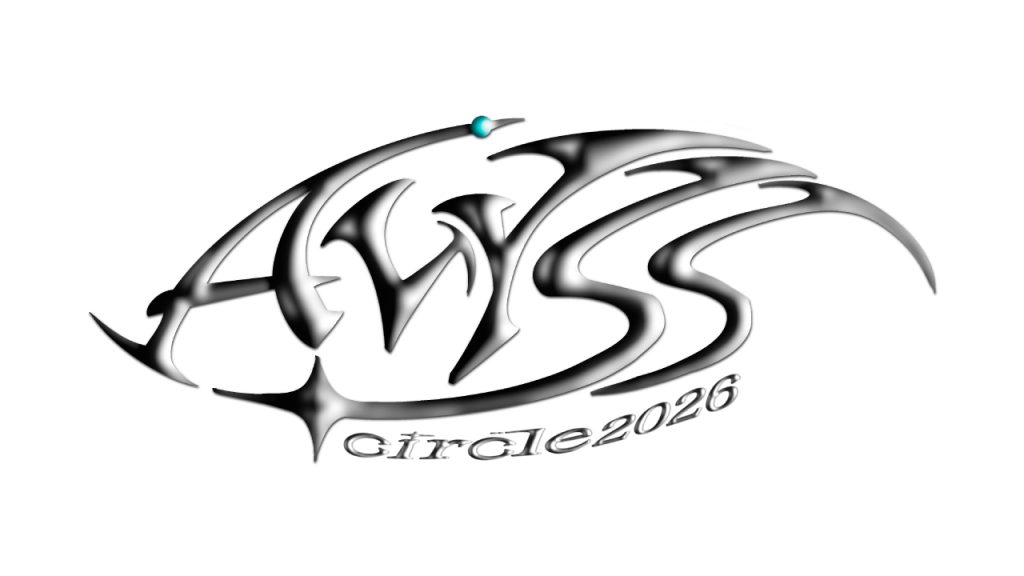
-
下北沢から渋谷へ、円環拡張開始|「AVYSS Circle 2026」過去最大規模で開催
DAY & NIGHT / 渋谷 5会場・7フロア使用
more
- 2025/10/22
-

-
「重さ」を「軽さ」に変えるPinkPantheressの魔法
PinkPantheress 特別企画第三弾
more



